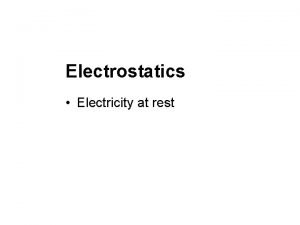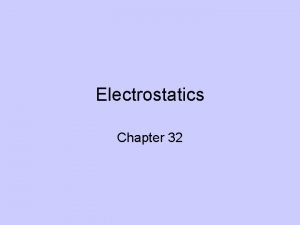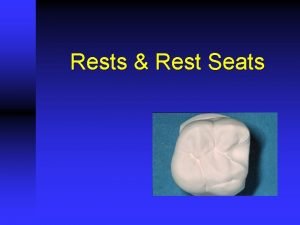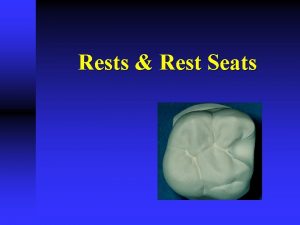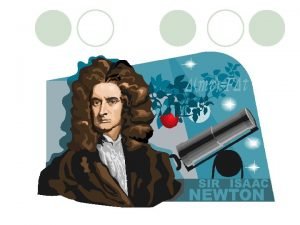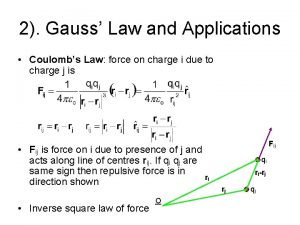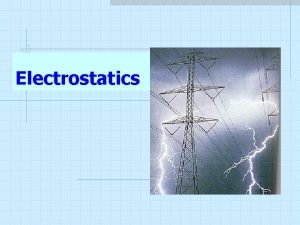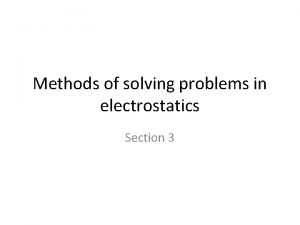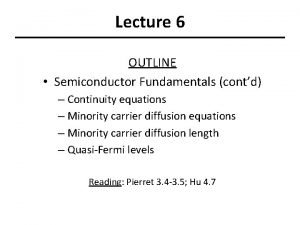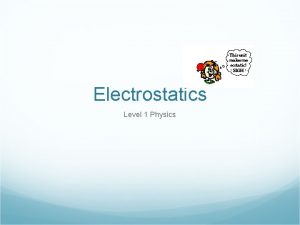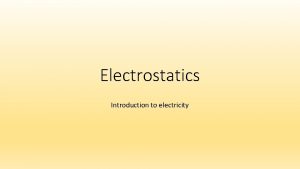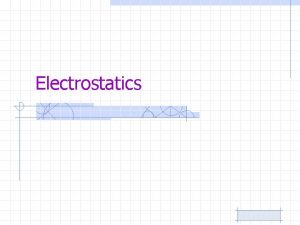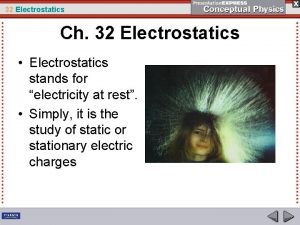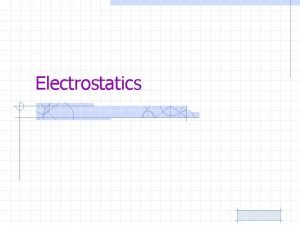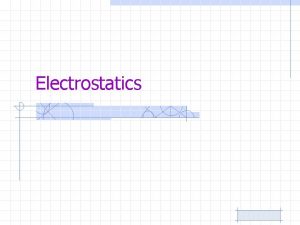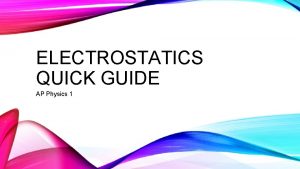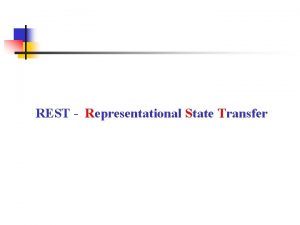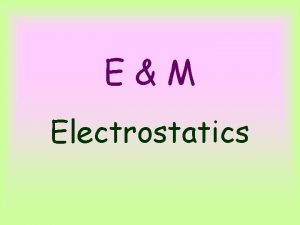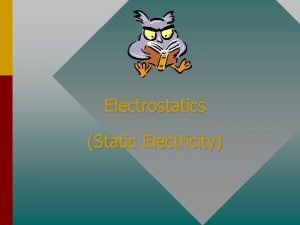Electrostatics Electrostatics is electricity at rest on the
















- Slides: 16

Electrostatics

• Electrostatics is electricity at rest on the surface of an object. • Charges move due to forces between objects and the behavior of the charged materials • Charges can be attractive or repulsive.

Chemistry Flashback… • A positively charged nucleus (protons and neutrons) is surrounded by negatively charged electrons • All electrons are identical in mass and charge • An atom usually has the same number of protons as electrons

Basic laws of attraction will apply!! • Likes repel • Opposites attract

Charging an object means you are adding or removing electrons …basically creating an ion However, all the electrons are accounted for creating “conservation of charge”

Example 1: Piece of silk + plastic rod → silk with extra electrons (- charge) + plastic rod with a lack of electrons (+charge) (with induction)

• By rubbing, electrons are exchanged • Electrons will “equalize” by a slow discharge (balloon sticking to a hair then falling off over time) OR quickly by a shock (rubbing socked feet on carpet then reaching for the light switch)

• Electrons can be controlled by using conductors to direct the direction of flow – Semiconductors or semimetals carry small currents – Superconductors carry large currents • Electrons can also be contained by insulators

Coulomb’s Laws of Attraction

• Coulomb’s Law is similar to Newton’s Laws of Gravity in that it compares 2 objects, the distance between them , the constant and the forces of attraction or repulsion

F= k /q 1 q 2/ 2 d F is in newtons k= 9 x 109 q= charge in C (1 C=6. 24 x 1018) d= distance of separation in meters

• Notice that the k constant in this formula shows that electrical forces are ENORMOUS compared to gravitation constants we have used before.

Example 1: • Hydrogen is composed of 1 proton, 1 neutron and 1 electron. If the average separation between charged particles is 5. 3 x 10 -11 m, what is the electrical force of attraction between them? (electrons have a -1. 6 x 10 -19 C charge and protons are +1. 6 x 10 -19 C charge)

• Many physicists have identified the similarities between Fe and Fg that Einstein spent years of his life searching for a “unified field theory”…linking gravity and electricity as the same principle.

Example 2: • Speaking of hydrogen again, the mass of a proton is 1. 7 x 10 -27 kg and the mass of an electron is 9. 1 x 10 -31 kg, calculate the Fg in a hydrogen atom. (use distance from example 1) F= g /me mp/ 2 d

Example 3: • Using your answers for examples 1 and 2, compare the forces of gravity and electricity in a hydrogen atom.
 Current electricity gif
Current electricity gif How are static electricity and current electricity alike
How are static electricity and current electricity alike Static electricity and current electricity
Static electricity and current electricity Charged rod
Charged rod Electricity at rest
Electricity at rest Canine rest seat
Canine rest seat Embrasure rest seat
Embrasure rest seat Newton's second lawlaw
Newton's second lawlaw Direct retainer in rpd
Direct retainer in rpd Stephen greenblatt hamlet in purgatory
Stephen greenblatt hamlet in purgatory Coulomb to volt
Coulomb to volt Gauss theorem
Gauss theorem Net charge
Net charge Method of inversion electrostatics
Method of inversion electrostatics Continuity equation in semiconductor
Continuity equation in semiconductor Facts about electrostatics
Facts about electrostatics Conduction vs induction
Conduction vs induction



